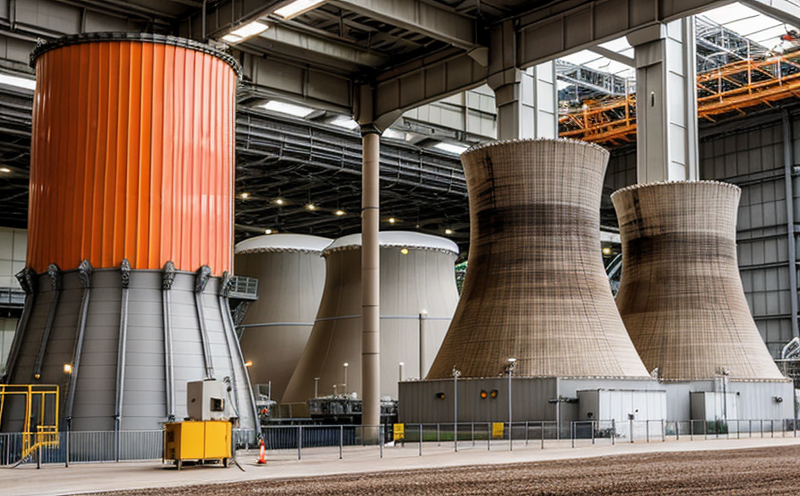ASTM E647 Fatigue Crack Growth in Reactor Pressure Vessel Steels
The ASTM E647 standard is a critical tool used by researchers, engineers, and quality managers to assess the fatigue crack growth behavior of reactor pressure vessel steels. This test is particularly relevant for nuclear power plants where materials are subjected to cyclic loading due to thermal cycling during operation.
ASTM E647 provides detailed procedures on how to prepare specimens, apply stress cycles, monitor crack growth, and analyze the results. The standard ensures that the testing process is consistent and reproducible across different facilities and laboratories. This consistency is vital for ensuring accurate assessment of material integrity in nuclear applications.
The test involves subjecting a fatigue-cracked specimen to cyclic loading until it fails. The focus is on quantifying the rate at which cracks grow under these conditions. The results help determine the safe operating parameters for reactor pressure vessels and ensure compliance with international standards such as ISO, ASTM, EN, and IEC.
The significance of this test lies in its ability to predict the life expectancy of critical components in nuclear power plants. By understanding how materials behave under cyclic loading, engineers can design safer and more durable structures that meet stringent safety requirements. This is particularly important given the high stakes involved in nuclear energy production.
Preparation for ASTM E647 testing involves careful selection and preparation of the specimen. The material must be representative of the reactor pressure vessel steel being tested. Specimens are typically cut from actual reactor components or similar materials that simulate real-world conditions as closely as possible.
The test setup includes a fatigue testing machine capable of applying cyclic loading to the specimens in controlled environments. These machines can precisely control temperature, humidity, and other environmental factors that may influence crack growth rates. The use of advanced sensors allows for continuous monitoring of stress levels and crack propagation.
Data collected during ASTM E647 tests includes measurements of crack lengths at various stages of loading cycles. This data is analyzed to determine the fatigue life of the material, which is expressed in terms of cycles-to-failure or hours-to-failure under specified conditions. The results are then compared against reference data from similar materials and components.
ASTM E647 testing ensures that reactor pressure vessel steels meet stringent quality standards set by regulatory bodies like the US Nuclear Regulatory Commission (NRC) and International Atomic Energy Agency (IAEA). Compliance with these standards is essential for ensuring public safety and operational reliability of nuclear power plants.
Quality and Reliability Assurance
- Consistent testing procedures ensure reproducibility across different laboratories.
- Data accuracy through precise measurement instruments and sensors.
- Compliance with international standards like ISO, ASTM, EN, and IEC.
- Continuous monitoring of stress levels and crack propagation.
Environmental and Sustainability Contributions
The results from ASTM E647 testing play a crucial role in enhancing the safety and reliability of nuclear power plants. By predicting potential failure points, these tests help prevent accidents that could lead to environmental contamination or release of radioactive materials.
Sustainable practices are integral to the design and operation of modern nuclear facilities. Ensuring the integrity of reactor pressure vessel steels through rigorous testing not only enhances safety but also contributes to long-term sustainability by extending component lifespans and reducing waste generation.
Use Cases and Application Examples
| Use Case | Description |
|---|---|
| Material Selection | ASTM E647 helps in selecting the most appropriate materials for reactor pressure vessels by assessing their fatigue crack growth behavior. |
| Component Design | Engineers use ASTM E647 results to design components that can withstand cyclic loading without failure. |
| Safety Assessment | The test provides critical data for safety assessments, ensuring that nuclear power plants operate within safe parameters. |
| Compliance Verification | Laboratories verify compliance with regulatory standards by conducting ASTM E647 tests on reactor pressure vessel steels. |
| R&D Support | ASTM E647 data supports research and development efforts aimed at improving material properties for nuclear applications. |





